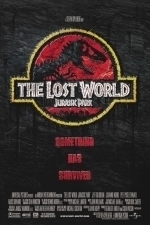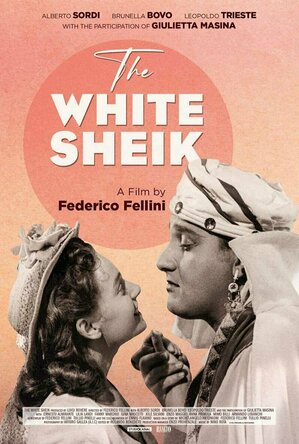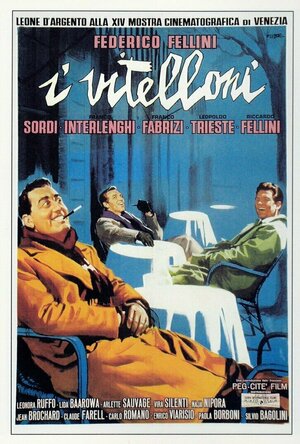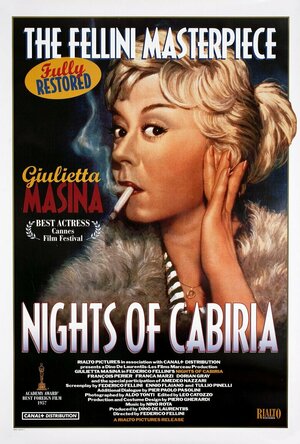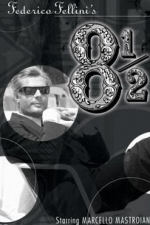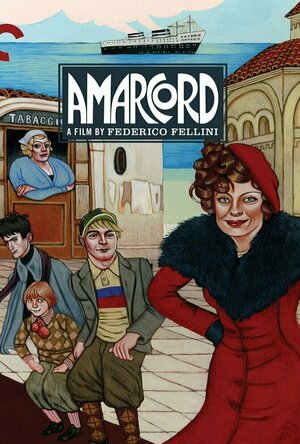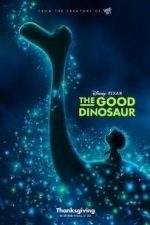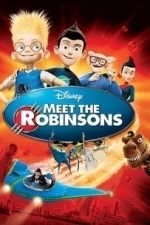Search
LeftSideCut (3776 KP) rated The Lost World: Jurassic Park (1997) in Movies
May 20, 2019 (Updated Jun 24, 2019)
An underrated sequel
And so it begins....
The Lost World is the first of a handful of sequels that don't even scratch the original, but I've always thought this was an underappreciated follow up.
As with the first, I first saw this when I was very young, and naturally thought it was incredible (as any 10 year old boy would), but unlike the first one, it doesn't hold up watching it now.
Starting with a huge positive though - I will always, and I mean always have time for Jeff Goldblum. He has always been one of my top actors and he returns to the role of Ian Malcolm with aplomb here.
Another welcome member of the cast is Pete Postlethwaite as the token bad guy, and of course Richard Attenborough returning as John Hammond.
There are also some great set pieces, namely the now infamous trailer-hanging-from-the-side-of-cliff scene. The tension built up here is reminiscent of the first T-Rex scene from the first film.
But on the flip side you have the last 30 minutes. The change of location is jarring and the urban setting highlights just how rough around the edges the special effects are.
I have to give kudos to Spielberg for attempting such an ambitious twist at the last minute, but it doesn't quite work, and gives way to a huge plot hole involving the fates of the ship crew.
I also find myself not really caring about the rest of the cast, which is a shame, as I tend to enjoy Julianne Moore.
Overall - it's not terrible, it's not great, but enjoy this sequel for what it is as it's down hill from here!
The Lost World is the first of a handful of sequels that don't even scratch the original, but I've always thought this was an underappreciated follow up.
As with the first, I first saw this when I was very young, and naturally thought it was incredible (as any 10 year old boy would), but unlike the first one, it doesn't hold up watching it now.
Starting with a huge positive though - I will always, and I mean always have time for Jeff Goldblum. He has always been one of my top actors and he returns to the role of Ian Malcolm with aplomb here.
Another welcome member of the cast is Pete Postlethwaite as the token bad guy, and of course Richard Attenborough returning as John Hammond.
There are also some great set pieces, namely the now infamous trailer-hanging-from-the-side-of-cliff scene. The tension built up here is reminiscent of the first T-Rex scene from the first film.
But on the flip side you have the last 30 minutes. The change of location is jarring and the urban setting highlights just how rough around the edges the special effects are.
I have to give kudos to Spielberg for attempting such an ambitious twist at the last minute, but it doesn't quite work, and gives way to a huge plot hole involving the fates of the ship crew.
I also find myself not really caring about the rest of the cast, which is a shame, as I tend to enjoy Julianne Moore.
Overall - it's not terrible, it's not great, but enjoy this sequel for what it is as it's down hill from here!
Greg Mottola recommended The White Sheik (1952) in Movies (curated)
Greg Mottola recommended I Vitelloni (1953) in Movies (curated)
Greg Mottola recommended Nights of Cabiria (1957) in Movies (curated)
Greg Mottola recommended 8 1/2 (1963) in Movies (curated)
Greg Mottola recommended Amarcord (1973) in Movies (curated)

Ta-ra-ra-boom-de-ay: The Dodgy Business of Popular Music
Book
Simon Napier-Bell is a legend in the music business. Not only was he the manager of The Yardbirds, T...

Light From The Grave
Book
I’m what nightmares are made of, but I’m not sure who’s more dangerous: him or me. In the...
MM Urban Fantasy Romance
Movie Metropolis (309 KP) rated The Good Dinosaur (2015) in Movies
Jun 10, 2019
Is it as good as Inside Out?
2015 has been a great year for film. From long-awaited sequels to the conclusion of epic franchises, it’s been one of the best and most successful movie seasons in recent memory, and with Star Wars: the Force Awakens out in December, it can only finish on a high.
It also marks the first time that Pixar has released two films in the same year. Summer saw the release of instant-classic Inside Out and now animation fans get to enjoy another movie from the studio, The Good Dinosaur, but has Pixar bitten of more than it can chew?
The Good Dinosaur follows the story of a young Apatosaurus named Arlo, voiced beautifully by Raymond Ochoa, as he comes to terms with growing up in an ever-changing world where dinosaurs never met their well-documented fates.
He, alongside human child Spot suddenly find themselves embroiled in a dangerous journey after getting lost a long way from their homes.
If this all sounds a little formulaic to you, then that’s because it is. The Good Dinosaur has a plot more akin to Paramount animation, rather than the exceptional storytelling we have come to expect from Pixar. There’s nothing particularly special or unique about the plot and this is a real shame.
Thankfully, Pixar’s usual gut-punches are out in full force and The Good Dinosaur is among one of the emotional films in the studio’s roster. Personal tragedy is never an easy thing to convey in a movie meant to be enjoyed by the whole family, but here it is dealt with in a beautiful and tasteful manner.
Scenes in which Arlo and Spot share their circumstances with each other hit home hard and are deeply saddening to watch.
The cinematography too is absolutely exceptional. The breath-taking prehistoric landscapes are rendered in such stunning animation, they almost feel real. From raging white-water to beautiful sun-flooded forests, everything is a joy to behold and this is where The Good Dinosaur excels – a firefly swarm in particular is spectacular and propels the film into How to Train Your Dragon territory for sheer spectacle.
However, the entire film feels like a show reel, albeit a mesmerising one, for the talents at Pixar. Each shot of scenery is lingered on for a little too long and agoraphobic Arlo’s plight can sometimes take a backseat to this beauty.
Nevertheless, there are some wonderful characters here. A trio of T-Rex, who turn out to be cowboys – or should that be cowdinos, provide The Good Dinosaur with some of its more standout moments and it’s the lack of these sequences where the film is found wanting.
Overall, Pixar has created another excellent piece of animation with The Good Dinosaur. Though not quite at their ‘gold standard,’ the film is a wonder to behold and shows just how gorgeous animated features can be.
Unfortunately, the lack of an original story ensures it’ll prove second best to Inside Out in this year’s battle despite its deeper emotional resonance.
https://moviemetropolis.net/2015/11/29/is-it-as-good-as-inside-out-the-good-dinosaur-review/
It also marks the first time that Pixar has released two films in the same year. Summer saw the release of instant-classic Inside Out and now animation fans get to enjoy another movie from the studio, The Good Dinosaur, but has Pixar bitten of more than it can chew?
The Good Dinosaur follows the story of a young Apatosaurus named Arlo, voiced beautifully by Raymond Ochoa, as he comes to terms with growing up in an ever-changing world where dinosaurs never met their well-documented fates.
He, alongside human child Spot suddenly find themselves embroiled in a dangerous journey after getting lost a long way from their homes.
If this all sounds a little formulaic to you, then that’s because it is. The Good Dinosaur has a plot more akin to Paramount animation, rather than the exceptional storytelling we have come to expect from Pixar. There’s nothing particularly special or unique about the plot and this is a real shame.
Thankfully, Pixar’s usual gut-punches are out in full force and The Good Dinosaur is among one of the emotional films in the studio’s roster. Personal tragedy is never an easy thing to convey in a movie meant to be enjoyed by the whole family, but here it is dealt with in a beautiful and tasteful manner.
Scenes in which Arlo and Spot share their circumstances with each other hit home hard and are deeply saddening to watch.
The cinematography too is absolutely exceptional. The breath-taking prehistoric landscapes are rendered in such stunning animation, they almost feel real. From raging white-water to beautiful sun-flooded forests, everything is a joy to behold and this is where The Good Dinosaur excels – a firefly swarm in particular is spectacular and propels the film into How to Train Your Dragon territory for sheer spectacle.
However, the entire film feels like a show reel, albeit a mesmerising one, for the talents at Pixar. Each shot of scenery is lingered on for a little too long and agoraphobic Arlo’s plight can sometimes take a backseat to this beauty.
Nevertheless, there are some wonderful characters here. A trio of T-Rex, who turn out to be cowboys – or should that be cowdinos, provide The Good Dinosaur with some of its more standout moments and it’s the lack of these sequences where the film is found wanting.
Overall, Pixar has created another excellent piece of animation with The Good Dinosaur. Though not quite at their ‘gold standard,’ the film is a wonder to behold and shows just how gorgeous animated features can be.
Unfortunately, the lack of an original story ensures it’ll prove second best to Inside Out in this year’s battle despite its deeper emotional resonance.
https://moviemetropolis.net/2015/11/29/is-it-as-good-as-inside-out-the-good-dinosaur-review/
Gareth von Kallenbach (980 KP) rated Meet the Robinsons (2007) in Movies
Aug 14, 2019
The magicians at Disney have done it again in crafting one of the most enjoyable family films in recent memory. In Meet the Robinsons, audiences are introduced to Lewis, a young orphan who spends his time between adoption interviews tinkering away with all manner of strange inventions.
Lewis is approaching his 13th Birthday, and has given up hope of being adopted, after 150+ adoption interviews have failed to find him a family. In a desire to learn why his mother put him up for adoption, Lewis crafts a new invention that he hopes will not only answer this question, but also win him a prize at the school science fair.
As Lewis is preparing his memory scanner for the show, he is approached by a boy named Wilbur Robinson who tells him to watch out for a man in a bowler hat, as he has designs on the memory scanner.
Lewis and Wilbur are unaware that the Man in the Bowler Hat has indeed already arrived, and has sabotaged the memory scanner causing Lewis to be humiliated when his experiment goes horribly wrong.
Unknown to Lewis, a dastardly plan is underway and while Lewis attempts to make sense of his misfortune and lack of a family, Wilbur whisks Lewis into the future via a time machine in an effort to thwart the Bowler Hat Guy from changing the future for the worse.
During the arrival in the future, the time machine is damaged, and since it is one of only two known to exist, Lewis is forced to make repairs to the ship in order to return to his own time.
It is learned that Wilbur’s father has invented the time machines, and when the Man in the Bowler Hat stole one of the machines, Wilbur took the other one in an attempt to set things right, and is not able to ask for help from his father, less he suffer punishment.
With the very future he knows in danger, Wilbur agrees to help Lewis see his real mother if he is able to fix the time machine, but they both have to deal with The Man in the Bowler Hat and Wilbur’s quirky family if they are to save the day.
The film is a real joy, and the amazing animation was made even better by seeing the film in Direct 3D. I highly suggest seeing the film in this format if there is a theater near you showing the film in 3D.
Many family films strive to offer something that viewers of all ages can enjoy, but few have done as well as “Robinsons“ as the laughs were easily enjoyed by all ages, without being cutesy or forced.
My wife and I really enjoyed the T-Rex character, and hope that should there be future installments of this series, that he gets a larger part in the future.
The film was well paced and never seemed to drag or have a lull in rich visuals to feast your eyes upon while you enjoy a well rounded story and interesting characters.
My advice, put the Robinsons in your future.
Lewis is approaching his 13th Birthday, and has given up hope of being adopted, after 150+ adoption interviews have failed to find him a family. In a desire to learn why his mother put him up for adoption, Lewis crafts a new invention that he hopes will not only answer this question, but also win him a prize at the school science fair.
As Lewis is preparing his memory scanner for the show, he is approached by a boy named Wilbur Robinson who tells him to watch out for a man in a bowler hat, as he has designs on the memory scanner.
Lewis and Wilbur are unaware that the Man in the Bowler Hat has indeed already arrived, and has sabotaged the memory scanner causing Lewis to be humiliated when his experiment goes horribly wrong.
Unknown to Lewis, a dastardly plan is underway and while Lewis attempts to make sense of his misfortune and lack of a family, Wilbur whisks Lewis into the future via a time machine in an effort to thwart the Bowler Hat Guy from changing the future for the worse.
During the arrival in the future, the time machine is damaged, and since it is one of only two known to exist, Lewis is forced to make repairs to the ship in order to return to his own time.
It is learned that Wilbur’s father has invented the time machines, and when the Man in the Bowler Hat stole one of the machines, Wilbur took the other one in an attempt to set things right, and is not able to ask for help from his father, less he suffer punishment.
With the very future he knows in danger, Wilbur agrees to help Lewis see his real mother if he is able to fix the time machine, but they both have to deal with The Man in the Bowler Hat and Wilbur’s quirky family if they are to save the day.
The film is a real joy, and the amazing animation was made even better by seeing the film in Direct 3D. I highly suggest seeing the film in this format if there is a theater near you showing the film in 3D.
Many family films strive to offer something that viewers of all ages can enjoy, but few have done as well as “Robinsons“ as the laughs were easily enjoyed by all ages, without being cutesy or forced.
My wife and I really enjoyed the T-Rex character, and hope that should there be future installments of this series, that he gets a larger part in the future.
The film was well paced and never seemed to drag or have a lull in rich visuals to feast your eyes upon while you enjoy a well rounded story and interesting characters.
My advice, put the Robinsons in your future.
